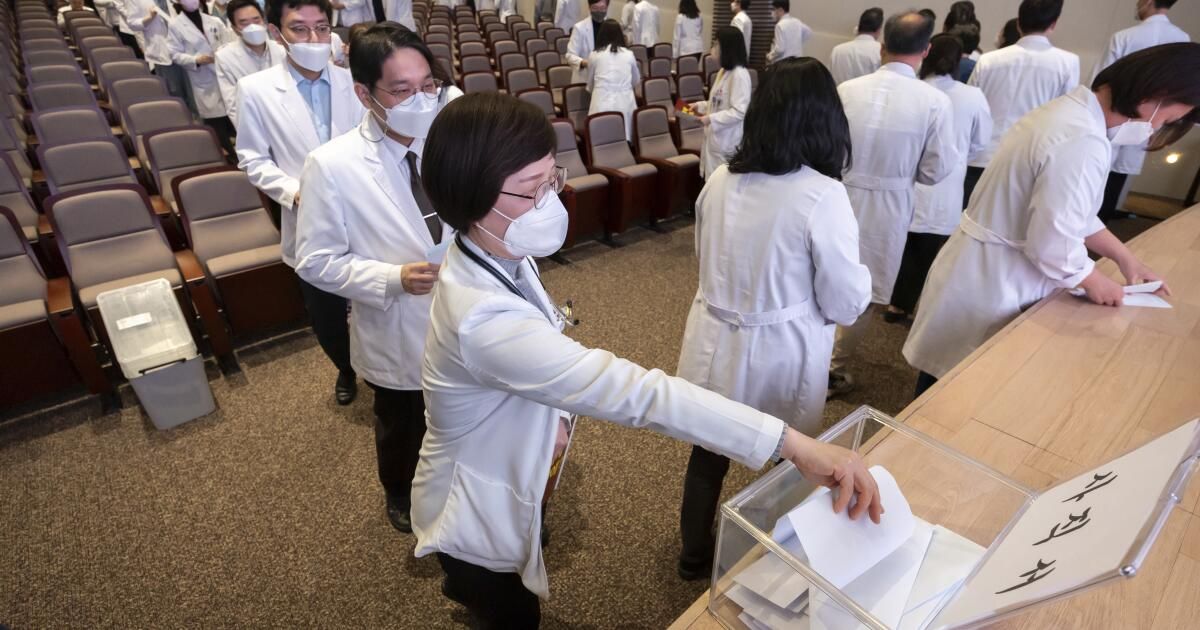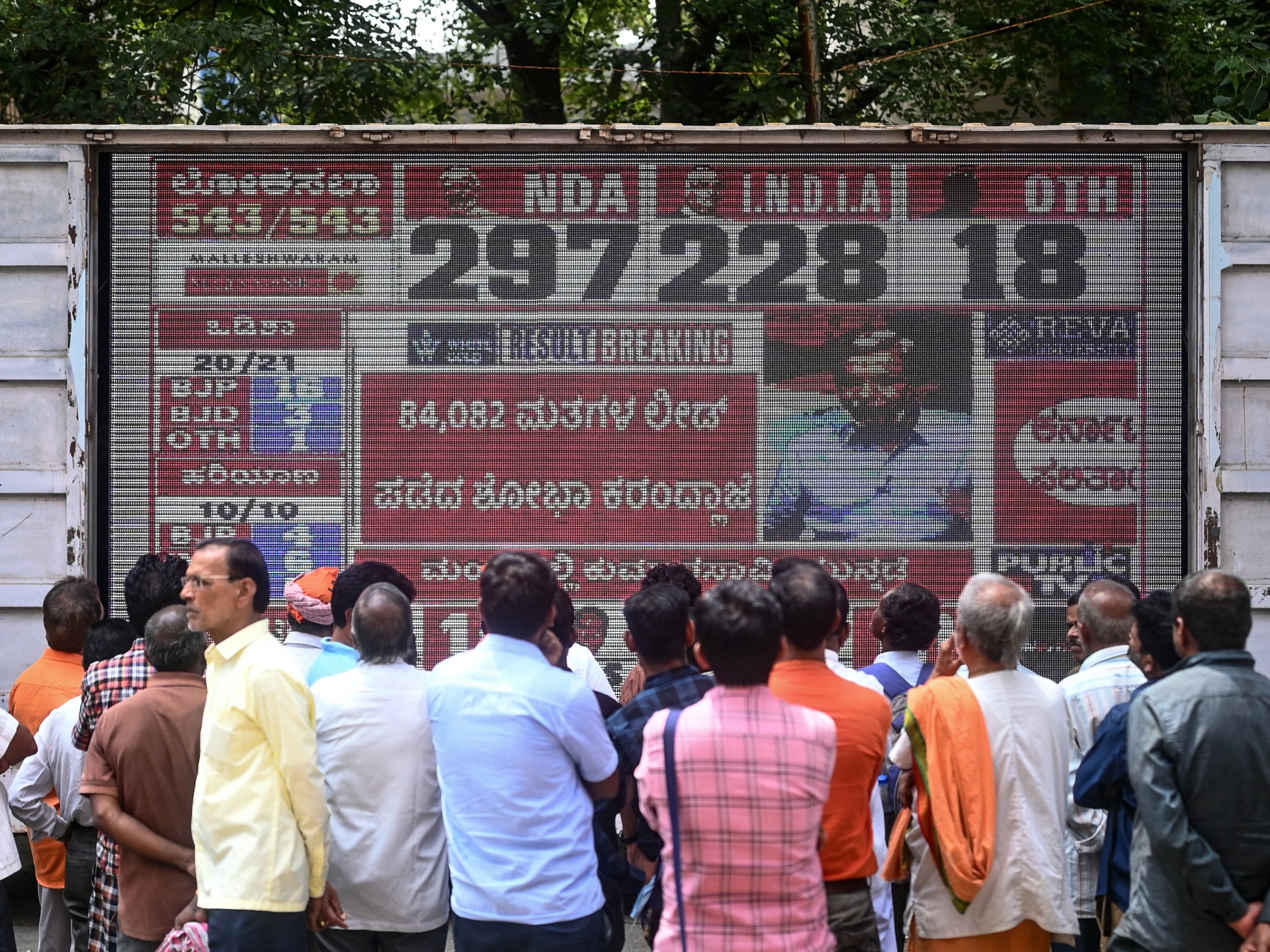By many measures, South Korea's healthcare system is one of the most successful in the world.
Consulting a doctor is easy. The mortality rate from preventable diseases is low. And although most hospitals and clinics are privately run, a nationalized system single payer The health insurance program keeps costs affordable.
An appendectomy costs $2,500, less than a fifth of the average price in the United States, and 80 percent of that price is covered by government insurance.
But a four-month-old baby strike The protest by more than 9,000 medical residents and interns across the country is turning the public against the medical system.
At stake is a government plan to add 1,497 spots to medical school admissions (a 48% increase) to meet South Korea's growing need for health care. ages of the population.
The government says it is simply trying to fill shortages in essential fields such as pediatrics or gynecology, which doctors are increasingly shunning in favor of better-paid specialties.
But young doctors, backed by their more experienced peers, say a wave of new graduates will compromise the quality of medical education, lead to unnecessary doctor appointments and drive down doctors' salaries.
“Of course, we are aware that these new graduates will end up joining the competition in the private practice market down the road,” said Dr. Peter Han, a 30-year-old internal medicine resident who quit his job at a major university hospital in Seoul in February. “Nothing good will come out of it.”
Patients and their families, holding signs reading “Medical Standardization,” demonstrate on July 4, 2024, to call for an end to the South Korean doctors’ strike that has disrupted public health services in Seoul.
(Ahn Young-joon/Associated Press)
At a rally in Seoul last month organized by the Korean Medical Association, doctors held signs reading: “Rush increase in medical school admissions will collapse the medical system.”
Considering the situation in South Korea fertility rate — the lowest in the world — Old people They are expected to represent 40% of the total population in 2050.
With around 112,000 doctors active in 2022, the government has estimated that the country will need at least 10,000 more in the next decade.
Some fields are already facing shortageA study of 59 teaching hospitals by Medi C&C, a local medical data firm, found that pediatrics departments failed to fill 152 of their 205 residency vacancies this year. Dermatology and plastic surgery departments faced overflows.
The protesting doctors have accused the government of disregarding artificial intelligence —which, they say, will one day reduce health care's dependence on human labor.
They have also suggested that much of the problem could be solved by increasing the efficiency of a system that has long combined a strong social safety net with free markets. South Koreans visit the doctor an average of 15.7 times a year, far more than in any other country, according to the Organization for Economic Cooperation and Development.
And despite being classified as tertiary care institutions for the sickest patients, teaching hospitals are chronically overcrowded because costs are low and primary care physicians make referrals even for minor ailments.
This is another factor motivating the strikers: the resident doctors say they are the cheap labour that holds everything together.
At major U.S. hospitals, residents make up about 14 percent of the total physicians on staff. In South Korea, they make up about 40 percent of doctors at the hospitals where they train. They earn nearly $2,900 a month while working an average of nearly 80 hours a week, often in 36-hour shifts.
“People say, ‘This is why we are trying to graduate more doctors,’ but hospitals are not necessarily going to hire more of us when it is more profitable to put the ones they have out of work,” Han said. “All these frustrations are finally coming to a head.”
As the strike drags on, doctors are losing the battle for public opinion. More than 80 percent of South Koreans oppose the strike and support the government's plan, according to a recent survey by research firm Southern Post.
Amid reports of cancer patients experiencing interruptions in their treatment and patients being shuttled from one emergency room to another in search of care, some patient advocacy groups have called on the government to permanently revoke the medical licenses of striking doctors and Bring in replacements from abroad.
The government has attempted to force absentees to return to their posts with threats of legal punishment, a hardline strategy This appears to have backfired.
“The government and doctors’ groups are behaving in the same way, which is why dialogue is not taking place,” said Yoon Tae-ho, a health management expert at Pusan National University. “People have simply become a tool and an object in this fight.”
Among them is Suh Yi-seul, whose 12-year-old son Kai was born with a rare congenital disorder called Klippel-Trenaunay syndrome that has caused his right leg and foot to grow to be twice as thick as his left ones and occasionally triggers skin infections that have prevented him from attending school.
“The only thing you can do when that happens is lie down for 10 days while you take antibiotics,” Suh said. “And each time, as the swelling goes down, your leg grows a little bit bigger.”
The residents' release from their Seoul hospital has indefinitely suspended evaluation of their case for an experimental therapy that research suggests could help prevent their condition from worsening.
He said he felt empathy for the doctors, but suggested they were behaving selfishly: “Shouldn't they also think about the social good, and not just their group interests?”
As head of a national network for patients with her son's disease, Suh recently met with lawmakers on the National Assembly's Health and Welfare Committee but got nowhere.
“It really seemed like they came just to let us off some steam,” Suh said. “They don’t know what to do for us either.”












